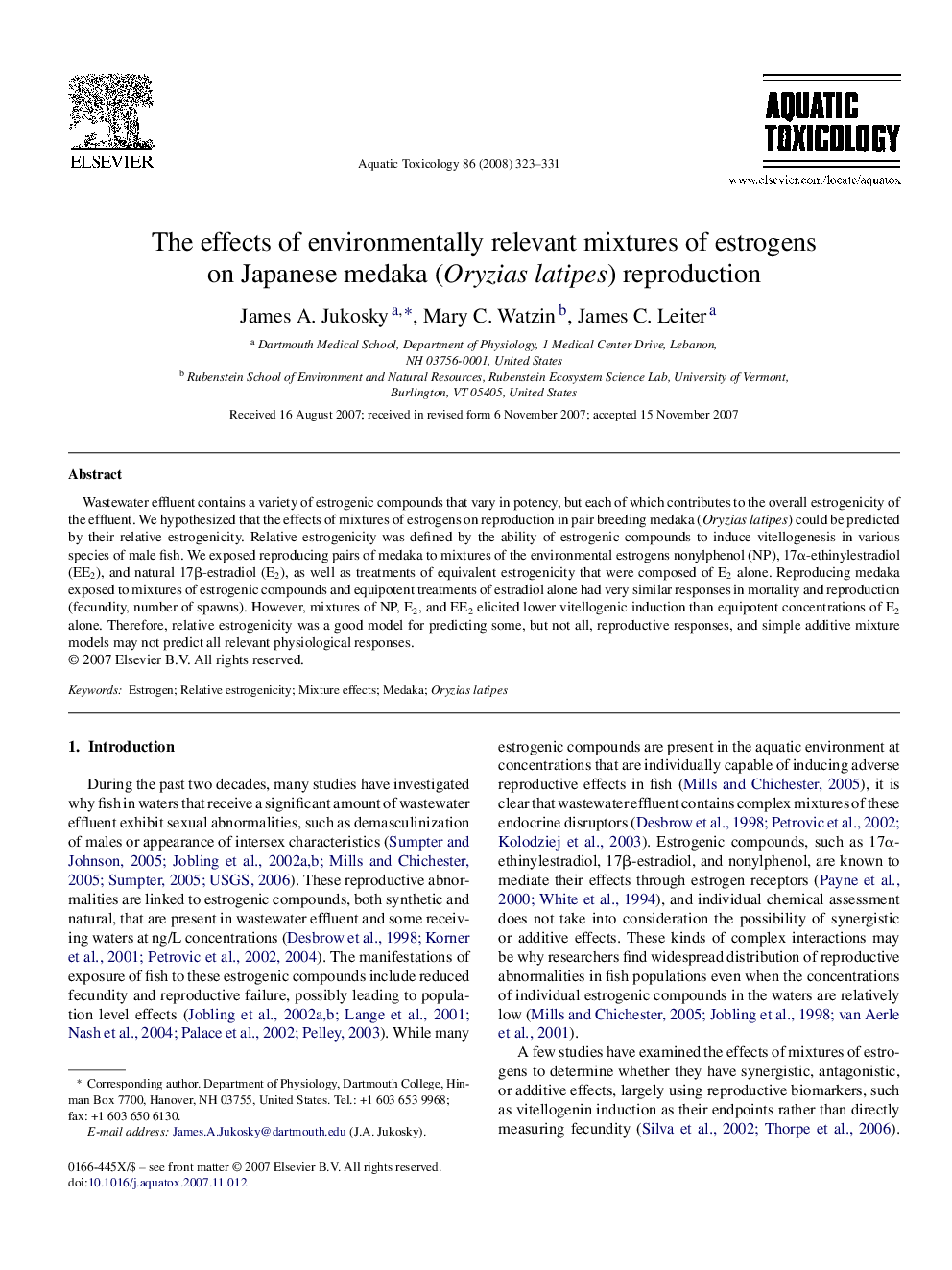| Article ID | Journal | Published Year | Pages | File Type |
|---|---|---|---|---|
| 4530832 | Aquatic Toxicology | 2008 | 9 Pages |
Wastewater effluent contains a variety of estrogenic compounds that vary in potency, but each of which contributes to the overall estrogenicity of the effluent. We hypothesized that the effects of mixtures of estrogens on reproduction in pair breeding medaka (Oryzias latipes) could be predicted by their relative estrogenicity. Relative estrogenicity was defined by the ability of estrogenic compounds to induce vitellogenesis in various species of male fish. We exposed reproducing pairs of medaka to mixtures of the environmental estrogens nonylphenol (NP), 17α-ethinylestradiol (EE2), and natural 17β-estradiol (E2), as well as treatments of equivalent estrogenicity that were composed of E2 alone. Reproducing medaka exposed to mixtures of estrogenic compounds and equipotent treatments of estradiol alone had very similar responses in mortality and reproduction (fecundity, number of spawns). However, mixtures of NP, E2, and EE2 elicited lower vitellogenic induction than equipotent concentrations of E2 alone. Therefore, relative estrogenicity was a good model for predicting some, but not all, reproductive responses, and simple additive mixture models may not predict all relevant physiological responses.
